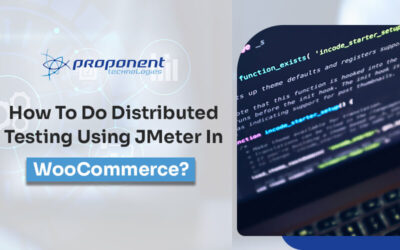In today’s digital landscape, cloud server management has become integral to running a successful business. As organizations increasingly rely on cloud infrastructure, it is crucial to implement best practices to ensure the smooth operation of cloud servers. This blog will explore practical strategies for managing cloud servers, allowing you to optimize performance, enhance security, and streamline processes.
Understanding Cloud Server Management:
Here we shall understand the essentials of effectively managing cloud servers, from optimizing resources to ensuring security and scalability. Enhance your cloud infrastructure management skills for seamless operations and business success.
1. Defining Cloud Server Management
Cloud Server Management refers to efficiently handling and administrating cloud-based servers to ensure smooth operations, optimal performance, and security. It involves resource allocation, monitoring, optimization, and maintenance, enabling businesses to effectively utilize cloud infrastructure for their data storage and processing needs.
2. Benefits of Efficient Cloud Server Management
Efficient cloud server management maximizes your cloud infrastructure’s performance, reliability, and security, leading to improved scalability, cost savings, streamlined operations, and enhanced data accessibility.
3. Common Challenges in Cloud Server Management
While overseeing cloud servers, the recurring obstacles include security risks, scalability issues, resource optimization, and maintaining high availability for smooth operations.
Best Practices for Cloud Server Management:
1. Accurate Resource Planning and Provisioning
Accurate Resource Planning and Provisioning involves precisely anticipating and allocating the necessary resources, such as infrastructure, personnel, and budget, to meet project requirements efficiently. It ensures optimal utilization of resources, avoids shortages or excesses, and promotes smooth project execution.
a. Conducting a thorough assessment of resource requirements
Conducting a comprehensive review of resource requirements involves carefully analyzing and determining the necessary resources for a task or project.
b. Scaling resources based on demand fluctuations
Scaling resources based on demand fluctuations refers to the dynamic adjustment of computing resources in response to varying levels of user demand, ensuring optimal performance and cost efficiency.
2. Implementing Robust Security Measures
Implementing robust security measures involves deploying comprehensive strategies and tools to safeguard digital assets from unauthorized access, data breaches, and cyber threats, ensuring the protection and integrity of sensitive information proactively and efficiently.
a. Utilizing strong authentication mechanisms
Utilizing strong authentication mechanisms refers to employing robust security measures that verify the identity of users to protect against unauthorized access or data breaches.
b. Regularly updating and patching server software
Regularly updating and patching server software refers to consistently installing the latest updates and fixes to ensure the server software’s security, stability, and performance.
c. Employing encryption for data transmission and storage
Encryption for data transmission and storage refers to the practice of securely encoding information securely to protect it from unauthorized access during its transfer or while at rest, ensuring confidentiality and data integrity.
3. Continuous Monitoring and Performance Optimization
Continuous Monitoring and Performance Optimization refers to regularly tracking, analyzing, and improving the performance and efficiency of systems, networks, or applications to ensure optimal functioning and user satisfaction.
a. Utilizing monitoring tools for real-time insights
Utilizing monitoring tools for real-time insights: Leveraging software and solutions to gain immediate, valuable information and analysis.
b. Analyzing performance metrics and addressing bottlenecks
Analyzing performance metrics and addressing bottlenecks involves examining data to identify issues that hinder optimal performance and taking corrective measures.
c. Optimizing server configurations for improved efficiency
Optimizing server configurations for improved efficiency means fine-tuning settings to enhance performance and maximize resource utilization.
4. Regular Data Backups and Disaster Recovery Planning
Essential measures to protect your data by creating copies and establishing strategies to restore operations after a catastrophic event.
a. Establishing a reliable backup strategy
Establishing a reliable backup strategy involves creating a plan to consistently and securely duplicate and store important data, ensuring its availability and protection.
b. Testing data recovery procedures periodically
Regularly evaluating the effectiveness of data recovery methods to ensure smooth restoration in case of a system failure.
c. Implementing redundancy to ensure high availability
Implementing redundancy provides uninterrupted access to resources by creating backup systems that kick in if the primary ones fail.
5. Automation and DevOps Integration
Automation and DevOps Integration refers to the seamless merging of automated processes and DevOps practices, enabling efficient collaboration, faster software development, and improved deployment cycles.
a. Leveraging automation tools for routine tasks
Streamlining repetitive tasks using specialized tools to increase efficiency and productivity.
b. Adopting DevOps practices for seamless collaboration
DevOps practices enable seamless collaboration by integrating development and operations teams, streamlining workflows, and enhancing communication.
c. Using version control systems to track infrastructure changes
Version control systems track and manage changes made to infrastructure, ensuring transparency, collaboration, and traceability for efficient management.
Ensuring Cost Efficiency:
1. Rightsizing Resources
We are optimizing the allocation of resources to match current needs, minimizing waste, and maximizing efficiency for optimal performance.
a. Identifying over-provisioned or underutilized instances
Identifying over-provisioned or underutilized instances means identifying cloud server resources that are either allocated more than necessary or not fully utilized.
b. Optimizing resource allocation for cost savings
Optimizing resource allocation for cost savings means efficiently distributing and managing resources to minimize expenses while maximizing efficiency.
2. Implementing Usage and Cost Monitoring
Implementing usage and cost monitoring involves tracking and analyzing resource usage to optimize efficiency and control expenses in a system or service.
a. Tracking resource consumption to identify cost outliers
Monitoring usage patterns to identify and address unusual expenses in resource allocation.
b. Utilizing cost management tools for budget control
Cost management tools help businesses control and track expenses, ensuring effective budget management and optimizing financial resources.
3. Leveraging Spot Instances or Reserved Instances
Maximizing cost efficiency and flexibility in cloud computing by strategically utilizing discounted server resources.
a. Taking advantage of cost-effective pricing models
Taking advantage of cost-effective pricing models means leveraging affordable and efficient pricing strategies to optimize your budget while maximizing the value you receive from a product or service.
b. Understanding trade-offs and usage scenarios
Recognizing the compromises and optimal applications for different choices and situations.
Maintaining Compliance and Governance:
1. Adhering to Regulatory Requirements
Adhering to regulatory requirements means following the specific rules and standards set by governing bodies to ensure compliance and legality.
a. Understanding industry-specific regulations
I understand industry-specific regulations: gaining knowledge about the rules and guidelines governing a particular industry.
b. Implementing necessary security controls and audit trails
Implementing essential security controls and audit trails refers to implementing measures and tracking mechanisms to ensure the protection and accountability of sensitive data and activities within a system or organization.
2. Establishing Strong Governance Policies
Establishing strong governance policies involves creating robust rules and procedures to ensure effective decision-making and organizational compliance.
a. Defining user roles and permissions
User roles and permissions define the specific access levels, and actions users can perform within a system or application.
b. Enforcing security and access controls
Enforcing security and access controls involves implementing measures to protect and regulate access to sensitive data and resources, ensuring only authorized individuals can access them.
c. Regularly reviewing and updating policies
Reviewing and updating policies involves assessing and modifying established rules and guidelines to ensure they remain relevant and practical.
Conclusion:
Effective cloud server management is crucial for maintaining reliable and efficient cloud infrastructure. By following the best practices outlined in this blog, you can ensure optimal performance, security, and cost efficiency. Proactive monitoring, automation, data backups, and compliance adherence are critical pillars of successful cloud server management. Implement these strategies to keep your cloud infrastructure running smoothly and support your organization’s growth in the digital era.
To get a free quote, you can Email us at: info@proponenttechnologies.com
Or you can also call us at: +91 7017 374 621, +91 6397 593 103
Related Blogs
How to Do Distributed Testing Using JMeter in WooCommerce?
Performing distributed load testing with JMeter in a WooCommerce environment enables you to efficiently simulate heavy user traffic across multiple machines, enhancing the scalability testing of your online store. Here's a streamlined approach to set up and execute...
How to do Black Box Testing in WooCommerce?
Black Box Testing is essential in every software application. It is one of the methods of software testing where the internal structure or code is not known to the software tester performing Black Box Testing. The tester will just need to be aware of the application's...
How to Perform Various Testing on WooCommerce Plugins?
Testing your WooCommerce store thoroughly ensures it operates seamlessly and delivers a superior user experience. Here’s a structured approach to testing extensions and maintaining code quality on your WooCommerce platform. Setting Up Your WooCommerce Environment...




